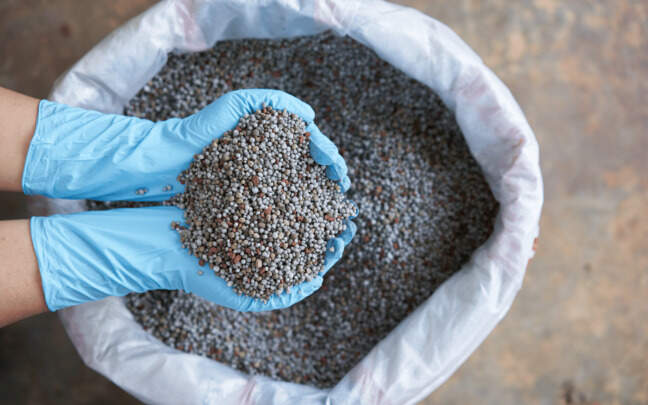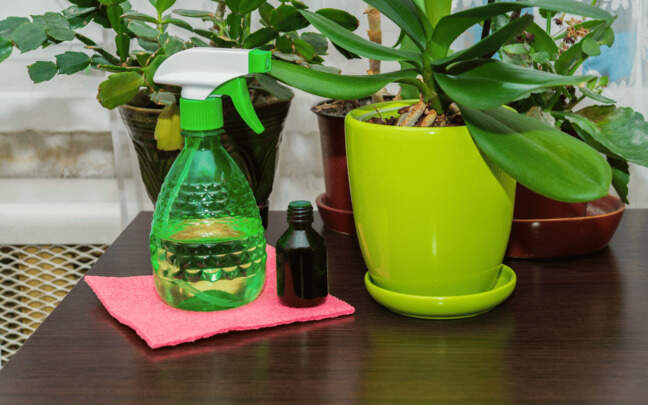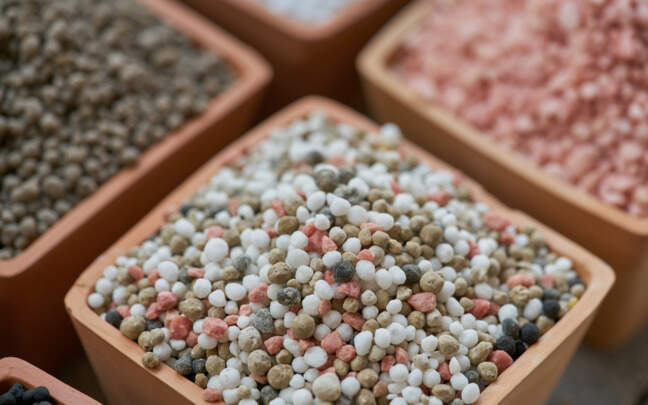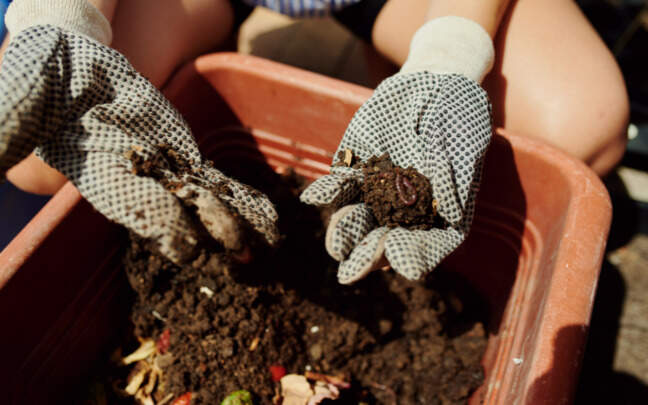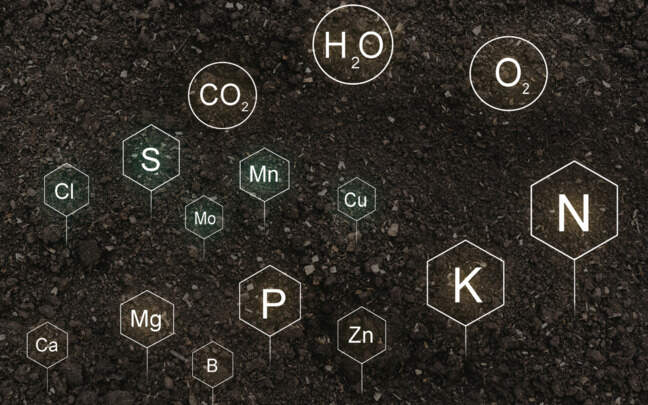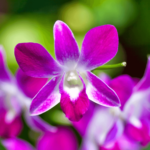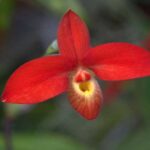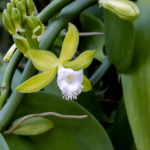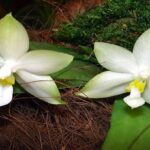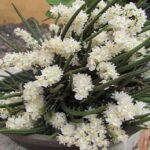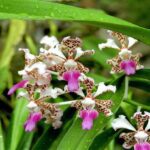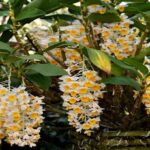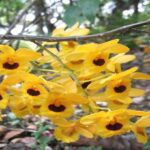How to fertilize orchids? Does any fertilizer aid in flowering? What are the best fertilizers?
These are common questions among orchid growers.
Especially for those who understand the importance of good fertilizer for their orchid, it can:
- Make it healthier
- Provide more energy for orchids to bloom
- Help in their development
And, to answer all your questions, in this article, you will learn everything about fertilization, from the basics to more advanced topics, such as macro and micronutrients.
Learn How to Achieve Super Blooms on Your Orchids
🛑 If you love orchids and you're tired of not being able to make them bloom...
Then, know that thousands of beginner growers are achieving beautiful flowers on their orchids by following this method.
Click the button below to have beautiful orchids with show-worthy flowers every year. ⤵
Types Of Fertilizers For Orchids
If you grow your orchid in pots, often the soil itself will provide some nutrients that will help in the development of your orchid.
However, no matter how good your orchid’s potting mix is, it alone will not provide all the necessary nutrients.
And, at that moment, fertilization becomes necessary.
Basically, fertilizers are substances that provide beneficial nutrients for your plant’s development.
They can be divided into 2 types:
Organic Fertilizers
Organic fertilizers are composed of substances that can be found in nature, that is, they do not go through chemical processes in factories.
Their main characteristics are:
- Slow nutrient absorption: which reduces the risk of your orchid suffering from excess fertilizer
- Less nutrient control: organic fertilizers do not have exactly how much nutrient they provide on their label.
- Cheap: they are cheaper than chemical fertilizers
- Ideal for beginners: as they are simple to apply and will hardly damage your orchid
- Decompose to nourish orchids: so the ideal for them is a hot and humid climate, as well as having a strong odor, which can be inconvenient for apartment cultivation
There are several types of organic fertilizers, such as Bokashi, castor bean cake, among others.
Below we will talk more about them.
Inorganic Fertilizers
Chemical or inorganic fertilizers are made in factories.
Their main characteristics are:
- Rapid nutrient absorption: which is good for orchids, but increases the danger of over-fertilization
- Nutrient control: by reading the label, you can control exactly how much and what nutrients you will provide for your orchid.
- A little more expensive
- Ideal for beginners, but requires more care
- Do not smell bad, as they do not decompose
How to Fertilize
This part is very important.
Knowing how to fertilize your orchid correctly will help you get healthier and especially more blooming plants every year, so in this topic, you will learn about:
- When and where to fertilize
- Fertilization in pots
- Fertilization on trunks, trees, or cachepots
- The best organic fertilizers
- The best chemical fertilizers
- Which fertilizer makes your orchid bloom
When And Where To Fertilize
Orchids should be fertilized in all growth phases by the roots, where they absorb nutrients more efficiently.
Fertilization should occur during a period when the sun is not too hot.
Ideally, in the early morning or late afternoon.
In nature, orchids receive few nutrients, so for chemical fertilizers, you need to be very careful with the fertilization interval. It is ideal to follow the recommendations on the package.
For Vanda orchids, fertilization is more frequent, occurring every 7 days.
Below are some symptoms that appear when an orchid is not fertilized correctly:
- Yellowing (it can also have yellow leaves for other reasons, as explained in this article).
- Root burns (caused by excess)
- Slow development (lack of nutrients)
- Absence of flowers (can be due to lack of nutrients or various other reasons)
Fertilizing Orchids Planted in Pots
To fertilize your orchid in a pot, follow the steps below:
When using organic fertilizers, put them in a small bag so that they are released gradually when you water your orchid, and position the bag on the edge of the pot.
When using chemical fertilizers, first water your orchid, then sprinkle the chemical fertilizer on the soil of your orchid, being very careful not to touch the flowers, as they can stain.
Fertilization On Trunks, Trees, or Cachepots
It is possible to use organic fertilizers on orchids that are on trees, trunks, or cachepots, but it is not a very efficient method.
Therefore, for orchids planted in these locations, I recommend that you use chemical fertilizers.
Basically, you will spray the fertilizer on the roots of these orchids.
Do You Want to Learn How To Keep Your Orchids Healthy And Ready to Bloom Every Year?
So, I prepared a complete guide, step by step and illustrated, that will show you:
• The secrets to getting beautiful flowers every year
• How to fight and identify pests and diseases on your orchids
• THE MAGIC SUBSTANCE for orchids and how to use it
• And much, much more.
The great news is that the manual is now available at a super discount!!
But beware, it's only for the first buyers.
Click on MORE INFORMATION below and discover the secrets to show-worthy flowers. 👇
Recommended Chemical Fertilizers
There are several fertilizer brands on the market, some good, others not so much.
In this part, I want to recommend some brands that many growers recommend and that will probably work very well with your orchid.
But first…
I need you to know 2 things:
- Always choose fertilizers that are water-soluble.
- You don’t need to stick to one brand; many growers like to change the brands of their fertilizers to provide different nutrients to their orchids from time to time
NPK Fertilizers
NPK fertilizers have the 3 most important nutrients for plants:
- N – nitrogen
- P – phosphorus
- K – potassium
They are widely used in the cultivation of various plants, and for orchids, this is no different.
Basically, fertilizers of this type are separated by 3 numbers after the NPK, with each number representing the amount of a certain substance.
For example, NPK 10 10 30 has equal amounts of nitrogen and phosphorus and a larger amount of potassium.
Basically, each different formulation serves a specific purpose that we will address better in the section on micronutrients and macronutrients.
In summary:
- NPK 10 10 10 or NPK 20 20 20 are used for orchid maintenance (usually during the dormant period)
- NPK 30 10 10 is used in growth
- NPK 10 30 20 is used to stimulate flowering
Other fertilizers
There are also fertilizers specialized for orchids that you can find for sale in online stores or gardening stores near your home.
To choose these fertilizers correctly, look for reviews from other growers and try to choose well-known brands.
Recommended Organic Fertilizers
Now that you have learned about some of the best chemical fertilizer brands for orchids, let’s talk a little more about organic fertilizers.
There are several options for organic fertilizers that can be used on orchids.
But, it is essential to understand that not everything is recommended.
For example, many fertilizers that we use on other plants are not good for orchids; below are some examples:
- Manure
- Worm humus
- Food scraps
For the vast majority of orchids, these fertilizers will not be beneficial, except for terrestrial orchids, such as the Paphiopedilum.
Below, you will learn about some of the main organic fertilizers.
Bokashi
Perhaps the best organic fertilizer, bokashi originates from the East and results from the fermentation of some vegetable and animal products.
It is possible to make bokashi at home, but as this is an article aimed at beginners, I recommend buying the ready-made product, as it is simpler and faster.
This fertilizer provides phosphorus, potassium, nitrogen, calcium, nickel, zinc, among others.
That’s why it is so widely used.
Bone Meal
Another widely discussed fertilizer is bone meal.
Known for having a large amount of phosphorus and calcium, this fertilizer is composed of crushed and cooked bones at high temperatures.
Although it is an excellent fertilizer, if you have any animals in your house, we do NOT recommend using this fertilizer, as the smell of bones can make dogs or cats eat the fertilizer, which can end up killing them.
If you want to use it, a very common mixture is with castor cake, being 1 portion of bone meal to every 3 portions of castor cake.
Other organic fertilizers
- Fish emulsion is a liquid fertilizer that is made from fish scraps. It is a good source of nitrogen and phosphorus, and it also contains other beneficial nutrients, such as potassium, iron, and calcium.
- Manure tea is a liquid fertilizer that is made from manure. It is a good source of all three macronutrients (NPK), as well as other beneficial nutrients, such as magnesium, sulfur, and trace minerals.
- Compost tea is a liquid fertilizer that is made from compost. It is a good source of all three macronutrients (NPK), as well as other beneficial nutrients, such as humic acids and beneficial microbes.
- Blood meal is a fast-acting fertilizer that is made from dried blood. It is a good source of nitrogen, as well as iron and other minerals.
- Seaweed extract is a liquid fertilizer that is made from seaweed. It is a good source of all three macronutrients (NPK), as well as other beneficial nutrients, such as trace minerals and vitamins.
Which Fertilizer Makes An Orchid Bloom?
There are several fertilizers made for orchid blooming, but what many people don’t know is the right time to apply them.
You won’t start using them during flowering, but 3 months before your orchid blooms.
This way, it will generate more energy and provide the necessary nutrients for your orchid to produce larger and more numerous flowers.
The best fertilizers to make your orchid bloom are those with a higher content of Phosphorus and Potassium.
For example, NPK 10 30 20.
Macronutrients And Micronutrients
Basically, every plant needs some nutrients to be healthy, and we divide these nutrients into:
Macronutrients:
- Nitrogen – growth
- Phosphorus – rooting
- Potassium – flowering
Secondary Macronutrients
- Calcium
- Magnesium
- Sulfur
Micronutrients
- Boron
- Chlorine
- Copper
- Iron
- Manganese
- Molybdenum
- Nickel
- Zinc
- Among others
When an orchid does not have the necessary amount of some of these nutrients, problems start to appear.
Usually, by using specific orchid fertilizers and changing brands from time to time, you won’t have to worry about this.
To delve deeper into macronutrients and micronutrients, see this article.
Conclusion
Orchid fertilization is just 1 of the topics you need to know to make them bloom.
But, mastering this topic, you will already have knowledge that the vast majority of growers do not possess.
If you want to learn more about orchids, below I have separated some articles that can help you:
- Ludisia the Jewel Orchid – How to Care in 7 Simple Steps
- Monkey Face Orchid – Photos, Curiosities and Much More
- Bamboo Orchid (Arundina graminifolia) – How to Care
- Dendrobium Nobile – How to Care, Photos and Curiosities
And if you liked this article, leave your comment below and share it on your social networks.

